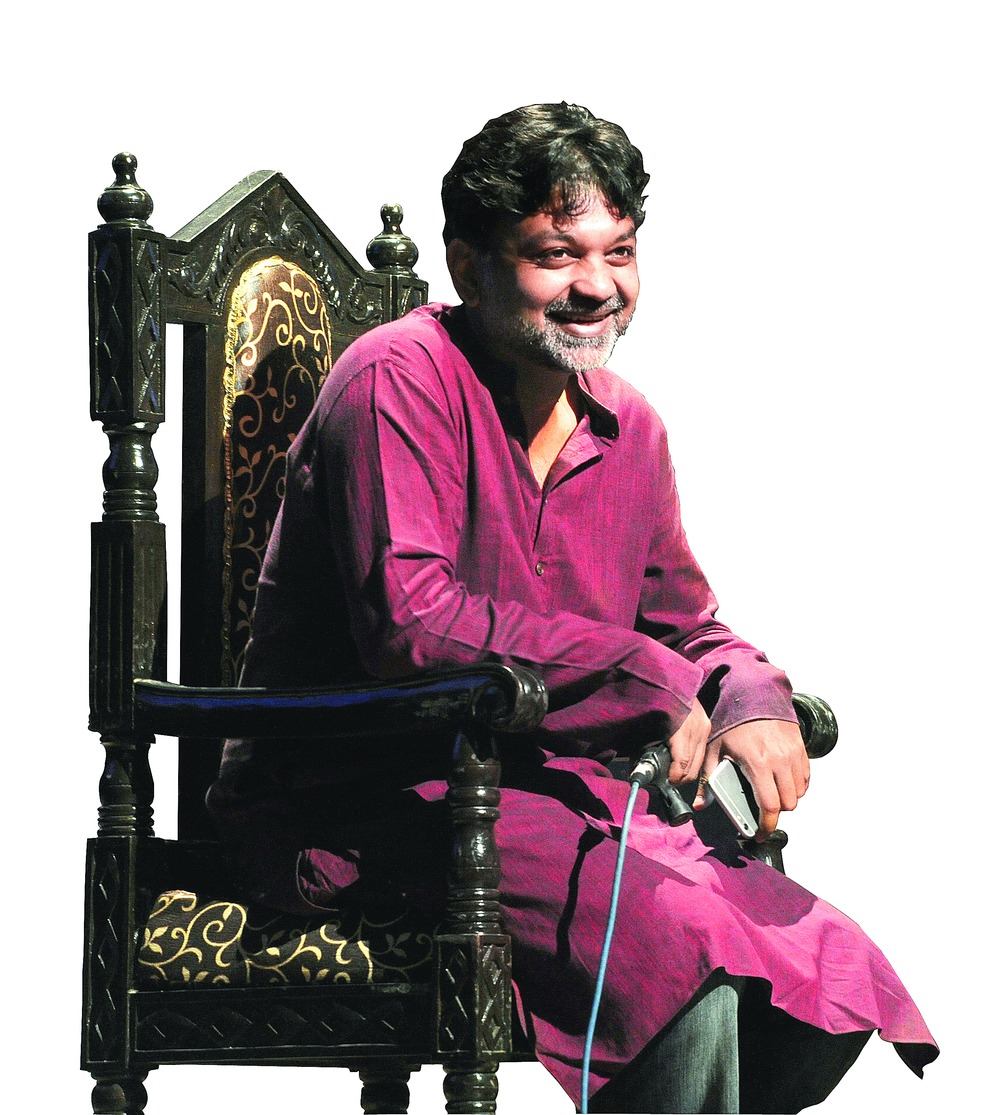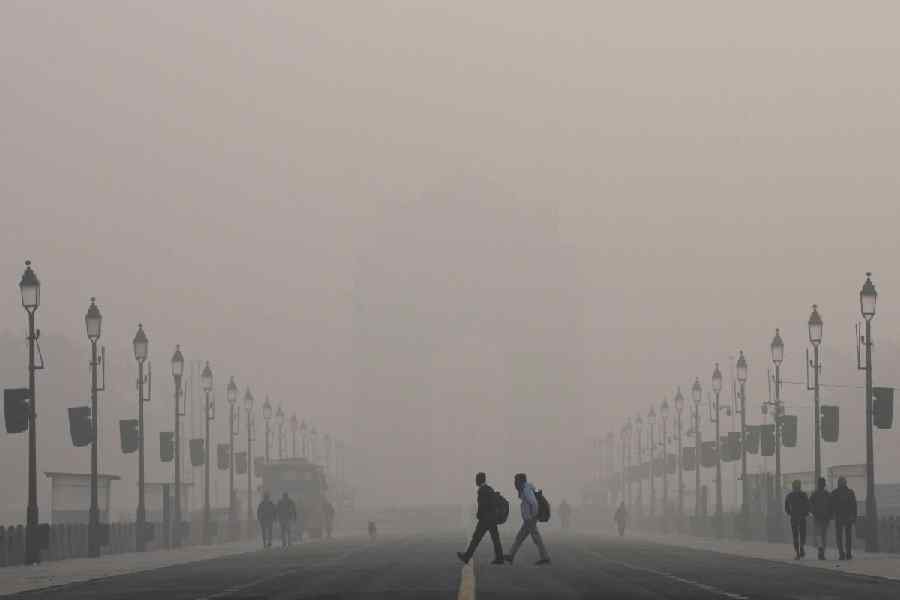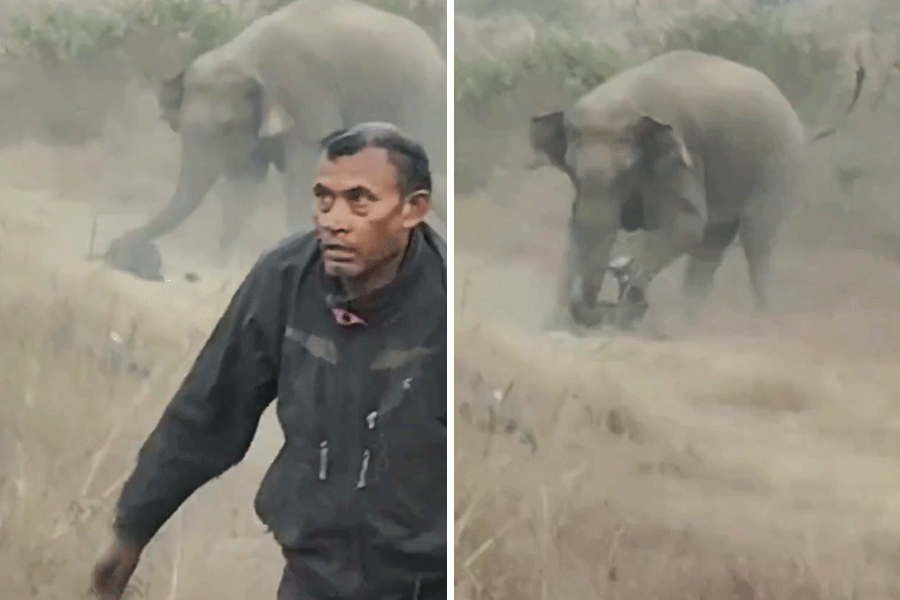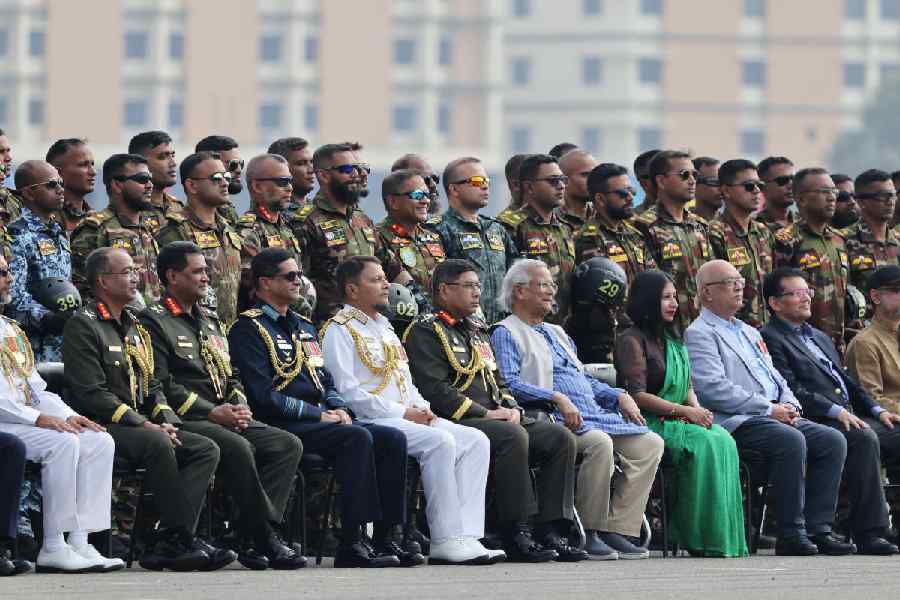Every day, for everyone, something shifts, something changes. And so also, every week and every month and every year. Good things, bad things, sad things, new things, keep flowing with time, the crazy wandering minstrel, at once aloof and benign, but not quite. And then the Durga Pujas arrive. Comfortingly same. The hard punctuation in an otherwise rambling script. For some, the Pujas are about the Puja-special skies, Paul Newman blue, the roll of dhaks, the butterflies in the stomach. For some it is about the chop-cutlets and oily chowmein, the mad, mad crowds, the crackle and swish of new clothes, the tight kolakulis. For some others, it is just about Ma Durga, the supreme knitter-in-chief, the epicentre of festivities. What do the Pujas mean to him? Director Srijit Mukherji, who has a new release timed with the festivities, tells Sharmistha Ghosal

My earliest Puja memories, among a lot of other things, are of pujor gaan. The pujor gaan gharana of the 60s, 70s and early 80s included some incredible musicians and singers - R.D. Burman, Salil Choudhury, Hemanta Mukherjee, Nirmala Misra, Pratima Bandyopadhyay, Satinath Mukhopadhyay, Manabendra Mukhopadhyay, Shyamal Mitra... There was also the very popular Amit Kumar, who is still there.
All these people were giants in the realm of Bangla music, and extremely popular. And they would have songs that were specially released keeping the Pujas in mind and those came packaged as pujor gaan. Two such favourite songs of mine are Nayana shoroshi keno bhoreche jole and Hawa megh saraye phul jhore. Both sung by Kishore Kumar.
The tradition of buying pujor gaan was a family ritual of sorts. My father, Samaresh Mukherji, was a professor of architecture by profession. Music was his passion.
Baba trained in music under stalwart composer Sudhin Dasgupta. He was a music connoisseur and would listen to all genres of music - Hindustani classical, ghazal, film music... And when it came to music, every year I used to be the lone witness to the endless debates - about who had the better song that year - between my father and grandfather, Shailendramohan Mukherji. My grandfather was a Lata fan and my father a diehard Asha fan, and both gentlemen had their own solid logic to counter the other.
I organically learnt a lot about music, since ours is a musical family. My aunt, singer Arati Mukherjee, was a huge influence. Thanks to her, I saw musical greats like Hemanta Mukherjee and others from a close distance - they would drop by at our place.
Pujor gaan, especially in the early 80s, was lyrically not very happening. Mind you, the melody and orchestration were excellent, but not the lyrics. A Swapan Chakarborty song could never take pujor gaan to the same heights as some of the songs sung by Asha Bhonsle. The songs naturally did not match up to the expectations of the listeners and the popularity of Puja songs waned. They started getting tacky, fast food types - massy, soul-less. Lyrics such as Ekta deshlai kathi jalao tate agun pabe never appealed to the Bengali mind. Alongside this grand decline, ran an interesting parallel counter movement called Mohiner Ghoraguli [Bengali band]. And then, independent music albums started replacing pujor gaan. In 1992 someone called Suman Chattopadhyay aka Kabir Suman, imploded on the scene. Songs like Tomake chai and O gaanwala became quite the rage, but the songs were never packaged as pujor gaan.
In 1992 globalisation happened and the world suddenly opened out like a telescope. A sort of mini revolution was taking place in terms of consumer choices. You had 100 channels at your fingertips. You could pick and choose, be it music albums, clothes, food or movies. And the icing on the cake - the Internet - was still a coming. And in the hullabaloo surrounding these new distractions, the pujor gaan phenomenon died a quiet death. Overwhelming dominance of film music and film releases also contributed to this. The vacuum was plugged by the very popular Anupam Roy brand of music - sensitive lyrics, moving renditions.
In such a scenario I debuted in the film industry. The year was 2010. The film was Autograph. When my producers said they would release the film during the Pujas, I was aghast. Who would watch a movie during the Pujas? When I was a kid, wasting even 15 minutes indoors post-Panchami was sacrilege. Pujas are a time when people go out for lunch, pandal-hopping, adda... Who will watch a film, cooped up in some dark hall, away from the lights and festivities, for two whole hours? Not me, for sure.


But the producers were unbudging in their resolve. They kept pushing their logic at me. Bengalis have a history of trying out everything new during this time, from clothes to food to music, it's a celebration of the new, yada, yada, yada. The conservative Bengali metamorphoses into this adventurous persona during the Pujas. Yellow shoes, cholbe. Red jeans, tao cholbe. And when everyone around you is experimenting, you can be forgiven the faux pas, they argued.
The trend of Puja releases, according to them, started with Rituparno Ghosh's Chokher Bali (2003). Remember, Aishwarya Rai as Binodini? It had proved that if you reach out to the audience with the right kind of Puja offering, they will throng the halls. I was uneasy with the logic, but I gave in. Autograph released on Mahasashthi in 2010, and the rest, as they say, is history.
We repeated the experiment with Baishe Srabon in 2011. And once again, it worked like magic. In the 2013 Pujas, Mishawr Rawhoshyo was a roaring success. And Chotushkone was released the Puja after that. In fact, people started referring to me as "Sharadiya Srijit". Some joked that they looked forward to my films more than the Puja shankhyas [special Puja supplements]. By the time we were in 2015, five big budget films released during the Pujas - Rajkahini, Sudhu Tomari Jonyo, Byomkesh, Cross Connection 2 and Katmundu.
This was further proof that like pujor gaan, Puja film releases was a phenomenon that was here to stay. The reason is that Durga Puja is the only time when Bengal seems to be bursting at the seams with probashi Bangalis from all over the world stopping by. And it is this homecoming centred around the mother of all homecomings - of Ma Durga, of course - that filmmakers are trying to make the most of.
This year too, my multi-starrer Zulfiqar was released along with Birsa Dasgupta's Gangster, Anjan Dutt's Byomkesh, Raj Chakraborty's Abhiman, Prem Ki Bujhini [by Sudipto Sarkar] and Chocolate [Sujan Mukhopadhyay]. So there are six films jostling for attention now.
However, I think this is getting slightly into the sub-optimal zone. Capacity wise, the Bengali film market has space for three films or at best four. Anything beyond that is an overdose.
We must remember that every family has an expenditure ceiling or a budget. With the movie-watching experience becoming an expensive affair, it becomes a matter of choice. You cannot milk the market beyond a certain point. You have to exercise restraint.
I remember my days as a teenager during the Pujas - kakimas, kakus, pretty girls adorned in their Puja finery, adolescence, notun prem, dupurer khichudi bhog, renting a VCR at night to watch films together, drinking for the first time. And, not to forget, the loud speakers playing my favourite songs in a loop.
There was also a very long period spent away from Calcutta - in Delhi and Bangalore - during the Pujas. I compensated by celebrating with Bengalis there. I found the Bangalore Pujas bigger and better than the Delhi Pujas.
Post 2010, my time during the Pujas is spent in various film release-related activities. And when I do go out pandal-hopping, it is usually on invitation to judge some pandal or the other. I check if my movie is doing well. That done, I overdose on adda, and return home only to catch up on some sleep.
Ma Durga is in town. All's right with my world.











